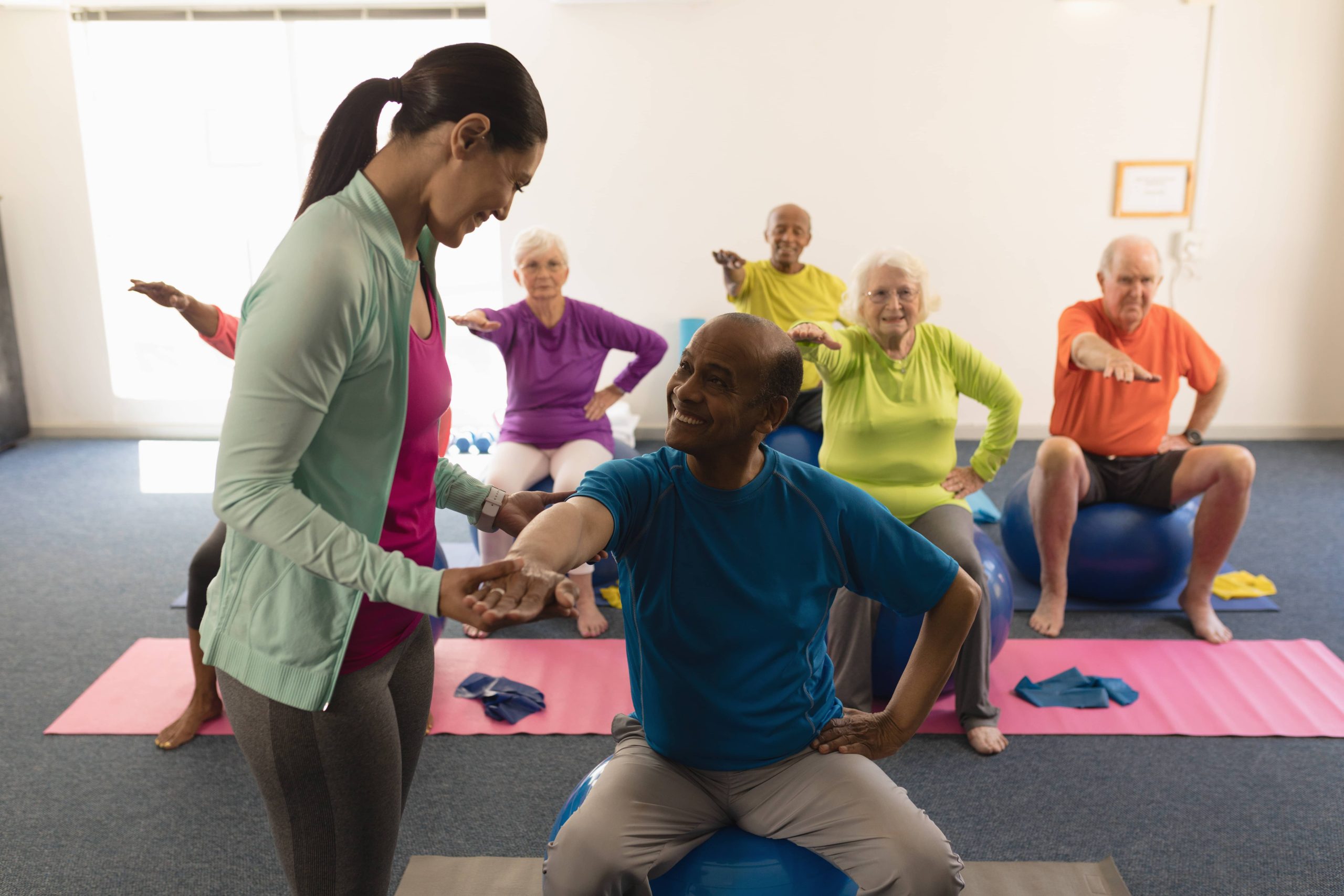
Aging is an inevitable part of life, but how we adapt to it can drastically influence the quality of our years. As the global population ages, a new paradigm in fitness and health care is taking root—”Active Aging.” This transcends simply maintaining muscle mass and cardiovascular fitness. It’s about embracing an active lifestyle that enhances our power, agility, and overall vitality as we age. The focus is shifting from traditional “loading” exercises to dynamic “exploding” power training techniques.
In this comprehensive exploration of active aging through power training, we’ll delve into the why and how of incorporating explosive movements into your fitness routine—no matter your age.
Understanding Power Training
Going beyond conventional strength training, which emphasizes the lifting of weights or resistance to build muscle mass, power training includes exercises that enhance your ability to exert maximum force in the shortest time. This means focusing on movements that are fast and explosive, such as jumping, sprinting, and throwing, which improve what is known as muscular power.
Muscular power differs from muscular strength; while strength is the ability to lift or move loads, power combines speed and strength, producing a more dynamic, functional ability crucial for everyday activities like climbing stairs, rising from a chair, or reacting quickly to prevent falls. These are attributes that become especially important as we age, affecting not only our physical health but also our independence and quality of life.
The Science Behind Power Training in Aging
Research has shown that power declines faster than strength with age. According to several studies, the natural aging process leads to a gradual decline in muscle mass, strength, and particularly power. However, interventions such as power training have shown promising results in reversing or at least delaying some of these declines.
Engaging in power training helps stimulate muscle fibers in a way that encourages growth and adaptation, crucially maintaining muscle function and overall physical capabilities. For seniors, incorporating power training can also enhance balance and coordination, two key factors in reducing the risk of falls—a major concern for older adults.
Shifting from Loading to Exploding
Transitioning from traditional loaded exercises to a dynamic power-focused regime might seem daunting, especially for those unfamiliar with explosive movements. However, with the right approach and guidance, anyone can safely incorporate elements of power training into their routine.
Benefits of Power Training for Aging
1. Improve Functional Performance: Enhancing power can help with day-to-day tasks that require quick reactions and movements, such as quickly opening a heavy door or catching yourself from falling.
2. Enhance Quality of Life: Regular power training can contribute to a better mood, improved cognitive function, and a reduction in the psychological symptoms of aging such as depression and anxiety.
3. Increase Bone Density and Joint Health: Explosive movements can help improve bone density, a crucial factor in combating osteoporosis, and improve joint health by stimulating cartilage growth and nutrient delivery.
4. Boost Metabolism and Maintain Healthy Weight: Even short bursts of high-intensity, explosive movements can significantly increase metabolic rates, aiding in weight management.
5. Reduce Fall Risk: Improved balance, agility, and reaction time from power training can drastically cut down the risk of falling—a serious threat to older adults that can lead to significant health complications.
Getting Started with Power Training
Before launching into a power training regime, it’s crucial to get the green light from a healthcare provider or fitness professional, ideally one specializing in aging or geriatrics. Once cleared, start with some foundational tips and exercises to get you moving safely and effectively.
1. Warm-Up Properly:
Kick-off every workout with a proper warm-up. Dynamic stretching and light aerobic exercises like walking or cycling can raise your heart rate and prepare your muscles for the increased demands of power training.
2. Focus on Form:
Technique is critical, especially with explosive movements. Begin with bodyweight exercises to perfect your form before progressing to weighted exercises. This will help prevent injuries and ensure your movements are effective.
3. Start Small:
Incorporating small, controlled explosive movements gradually is key. Even simple exercises like standing calf raises or seated leg lifts, performed with speed, can initiate power enhancements.
4. Incorporate Variety:
To address different muscle groups and prevent burnout, vary your exercises. Consider moves like squat jumps, medicine ball throws, or short, fast sprints, all tailored to your ability level.
5. Prioritize Recovery:
As with any training, recovery is vital, particularly for older adults whose bodies may require more time to heal. Allow sufficient time for rest between workouts and consider activities like yoga or tai chi to promote flexibility and recovery.
Sample Power Training Routine for Beginners
Here’s a simple routine tailored for beginners:
– Warm-Up: 5-10 minutes of brisk walking or stationary cycling.
– Bodyweight Squats: Perform 2 sets of 10 controlled reps, attempting a slight jump on the last rep to introduce an explosive element.
– Knee-High Marches: 3 sets of 20-30 seconds, driving knees up explosively while maintaining proper posture.
– Wall Ball Tosses: 3 sets of 10 reps using a light medicine ball, focusing on explosive throwing movements.
– Sprinting on the Spot: 3 sets of 20-30 seconds, focusing on quick foot turnover without leaving the spot.
– Cool-Down: Gentle stretches focusing on major muscle groups used.
Embracing Dynamic Aging
Power training is more than just another exercise fad; it’s a strategic approach to aging actively and gracefully. By transitioning from loading to exploding, we harness the benefits of both speed and strength, essential elements that help maintain a vibrant, independent life.
As research continues to support the advantages of power training, there’s no better time to embrace this method. Whether you’re in your 50s, 60s, or beyond, it’s never too late to start. Engage with your local fitness community, find social activities centered on movement, and most importantly, have fun with your power training journey.
Through dynamism, resilience, and a touch of explosive energy, we can redefine what it means to age—and to do so on our terms.











